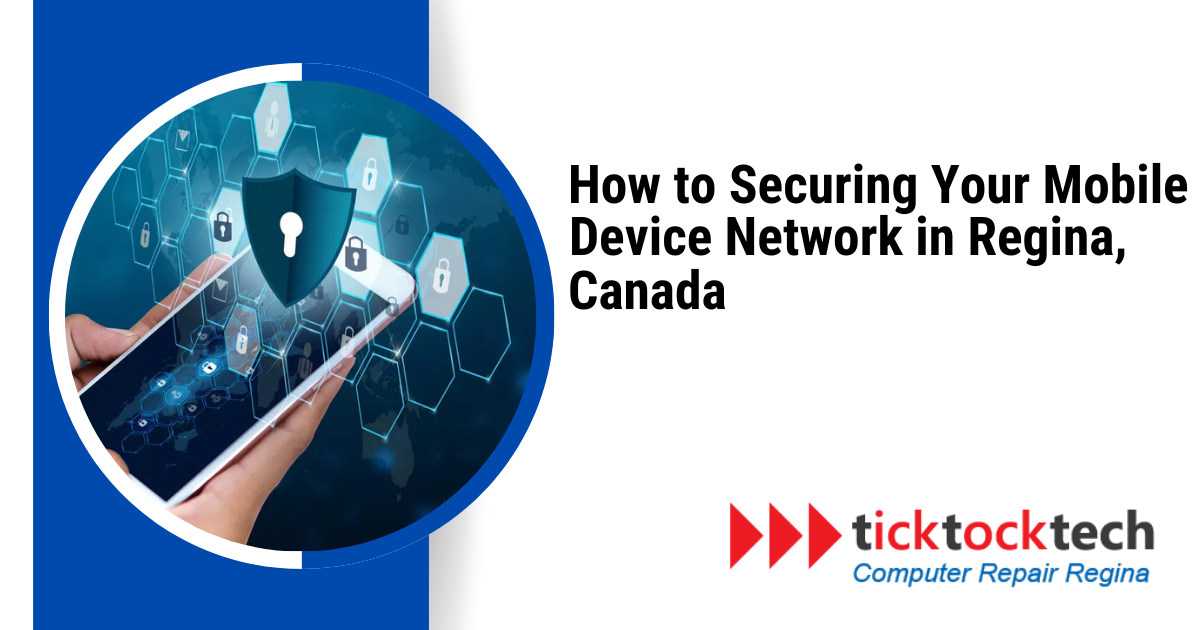We have been much concerned about our laptops, or desktops getting cyber-attacked, or infected. But, do you know your mobile device and smartphones can get hacked by cyber criminals? Yes, hackers can break into mobile device networks or launch attacks against them. Mobile electronic devices, such as smartphones and tablets, are vulnerable to the same kinds of cyber threats as other devices that are linked to the internet. They follow the same process as the computer, which is to look for security vulnerabilities. Secure your mobile network.
Most mobile viruses and malware are acquired via dubious links from websites, redirection, and mail. Your mobile network however could face security challenges from hackers or even malware. However, the best way to prevent these mobile device infections is proper precautions. This post will give you complete guidance on how you actively secure your mobile device network.
1. Use Strong Password
The primary defense against unauthorized access to your mobile device’s network is a robust password. For added security, make sure to change the password frequently and use a complex one for all of your devices. Refrain from using combinations like “1234” or “password.”
Related: Common Password Pitfalls that Undermine Cybersecurity
To make it secure, your password should include both uppercase and lowercase letters, numbers, and symbols. Think about picking passphrases that are easy to remember yet tough to figure out. The security of a network can be enhanced by enforcing strong password policies and regularly changing them.
2. Two Factor Verification
The security of your mobile device network is greatly enhanced by using two-factor authentication (2FA). Two forms of identification are required before users may access their accounts. A combination of a password and an additional security measure, such as a code sent by text message or biometric verification, is commonly employed.
Related: How to enable 2FA
Users are required to provide two forms of identification, such as a password and a fingerprint, to get access to the network. The risk of unauthorized access to your company’s data can be significantly reduced with two-factor authentication.

3. Use of VPN
Virtual private networks (VPNs) encrypt data transmitted over the internet, making it more secure. Using a virtual private network (VPN) encrypts all of your data as it travels over the internet, making it nearly hard for prying eyes to decipher. Another way virtual private networks (VPNs) make it harder for hackers to track your whereabouts and online activities is by masking your IP address.
Related: The Best Free VPNs for 2024
Companies may ensure that employees’ mobile devices remain secure even when they access important company data remotely. The use of virtual private networks (VPNs) on mobile devices safeguards sensitive business communications and prevents unauthorized access to sensitive data.
4. Beware of Downloads or Website Visits
Downloading apps or visiting websites from unknown sources might jeopardize the security of your mobile device network. The aforementioned sources may include harmful software or viruses, which might jeopardize the security of your device and network.
Inadequate security measures during the downloading process might result in possible data breaches or the unintentional installation of harmful software, posing a substantial danger to the confidentiality and integrity of both personal and business-related information. When working with hyperlinks, especially ones that are redirected, exercise extreme caution.
Related: Phishing scams and bitcoin
When dealing with unsolicited emails or texts, the same level of caution should be exercised. Certain online browsers, including Firefox and Safari, offer a vital warning feature to protect users against potentially hazardous websites, especially those that use extensions such as “Scam void.”
5. Keep access point software patched and updated
To secure your mobile network, it requires that you update the software on your access point regularly. The use of out-of-date software may expose your network to different security flaws, which might allow malevolent hackers to gain unauthorized access and jeopardize the confidentiality and integrity of your priceless data.

You may improve the security of your network and successfully mitigate known vulnerabilities by making sure that the software on your access point is updated regularly.
6. Use of Firewalls and Anti-Virus
Firewalls function as digital barriers that effectively monitor and regulate the flow of network traffic, encompassing both inbound and outbound data transmissions. Firewalls are designed to effectively thwart unauthorized access and restrict network traffic to only the necessary components.
The primary function of anti-virus software is to detect and remove malicious software, commonly referred to as malware, which encompasses various types such as viruses, trojans, and spyware. This software plays a crucial role in safeguarding the security of your network.
By integrating firewalls with reliable anti-virus software, users can enhance their cybersecurity measures and fortify their protection against various forms of malware and cyber threats. The integration of these components yields a highly efficient solution for thwarting unauthorized access, while also providing robust capabilities for detecting and addressing potential security vulnerabilities.
7. Monitor Connected Devices
Keeping an eye on linked devices is essential to guaranteeing network security. This entails keeping a watch out for unforeseen events, including strange login attempts or data transfers. By keeping an eye on linked devices, you can prevent data breaches and other security problems and quickly recognize and address security threats.
For businesses, monitoring linked devices is a preventive security measure. It stops future data breaches by identifying unauthorized access and questionable activity. In corporate settings, where the compromise of sensitive information can have catastrophic repercussions, this degree of vigilance is especially important.
8. Network Data Encryption
Data encryption on a network is the process of transforming data into a code that is only understandable by authorized users. Your network data can be encrypted to prevent interception and eavesdropping, thereby guaranteeing its confidentiality and security. This guarantees that without the encryption key, data will remain unreadable even if it is intercepted. Network data encryption helps businesses by protecting confidential company information. When workers use company networks from a distance, encryption provides an additional degree of security.
Conclusions
As cyber dangers increase, it is critical to secure your mobile device network in Canada. This thorough book has established practical strategies for both individuals and enterprises, ranging from using secure passwords to establishing network data encryption. Recognizing mobile devices’ vulnerability to cyber threats, the necessity of strong security measures cannot be emphasized. These tactics provide practical benefits, preserving the security and integrity of personal and business-related information, whether they protect against illegal access or monitor linked devices. Users may dramatically improve the security of their mobile device networks by remaining proactive and following these steps.

